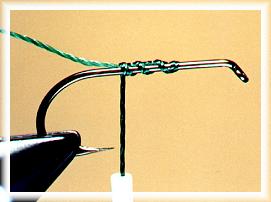Whip Finishers
Whip finishers are probably the least used and least understood, basic tool in the average fly tyer’s arsenal. This is the tool that creates the nice knot at the head of the fly that keeps the fly together. If your flies fall apart, it’s most likely due to the whip knot you didn’t do or didn’t do right when you finished the fly. Some fly tyers use their fingers to do a whip finish knot. Although this often provides an acceptable knot, it sometimes provides an un-acceptable knot. Since learning to use a whip finisher is one of the basic skills of fly tying, I’ll show you how to use the tools right. I won’t show you how to do a whip knot by hand, at least not until the series is over, and maybe not then. I’m convinced that this is one skill you must learn to do right to be as good a tyer as possible. There are two main styles of whip finishers. One is the Matarelli and the other is the Thompson. (You might see a simple whip finisher; it functions the same as the Matarelli.) While I’m not certain of the origins of these tools, I think it’s reasonable to assume they bear the names of their inventors. Both styles can be used on a variety of flies, but each style has specific benefits when used on certain types of flies. This week we’ll learn how to use the Matarelli whip finisher. This is the easiest of the two whip finishers to use. It can be used on a variety of flies, but it is much easier than the Thompson to use on bullet head, jig head, bead head, cone head and foam head flies. Any time you need to create a whip knot back away from the hook eye, this is the tool for the job.
Again Al Campbell has all of the right information with the easiest to follow instructions. Keep looking for more of his fly tying ideas right here. I found that they are the best.
Ron

